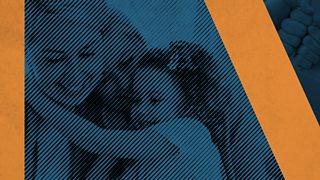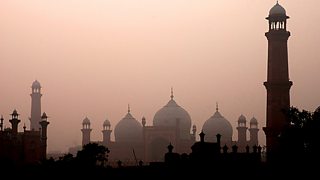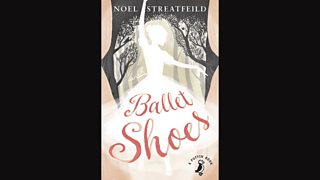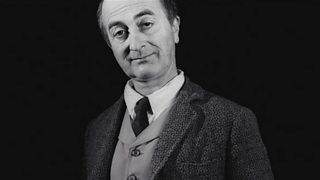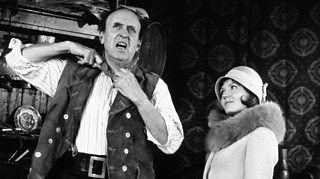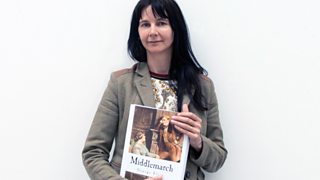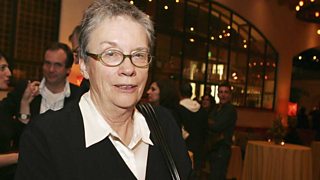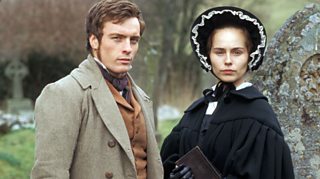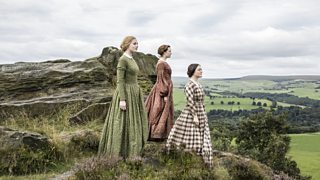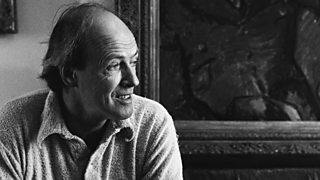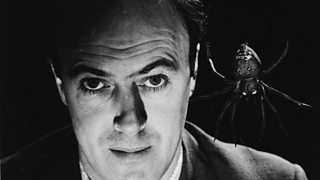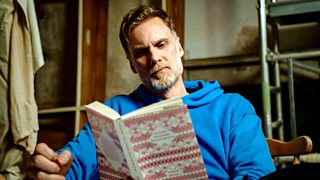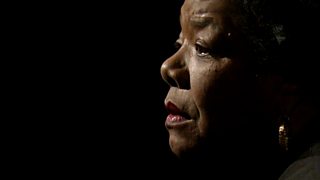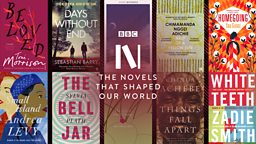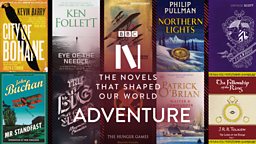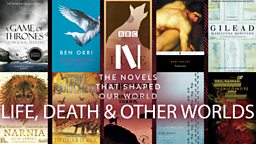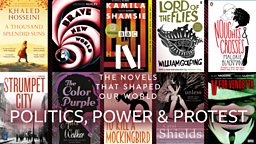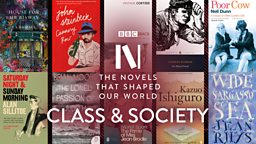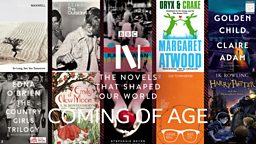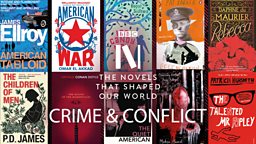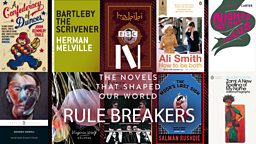Ten tales of relationships that make life worth living
Ten novels exploring the good, the bad and the ugly side of familial relationships, and the power of friendship. From Flora Poste sorting out the doomed Starkadders in Stella Gibbons' Cold Comfort Farm, to a young boy fighting evil with the help of his grandmother in Roald Dahl's The Witches.

The panel have chosen chosen these novels on the theme of Family and Friendship:
The panel have chosen these novels on the theme of Family & Friendship: A Suitable Boy by Vikram Seth; Ballet Shoes by Noel Streatfeild; Cloudstreet by Tim Winton; Cold Comfort Farm by Stella Gibbons; I Capture the Castle by Dodie Smith; Middlemarch by George Eliot; Tales of the City by Armistead Maupin; The Shipping News by E. Annie Proulx; The Tenant of Wildfell Hall by Anne Brontë; The Witches by Roald Dahl.
The Novels Survey
-
![]()
Contribute to a people's list of best-loved family & friendship stories and get personalised book recommendations.

A Suitable Boy by Vikram Seth, 1993
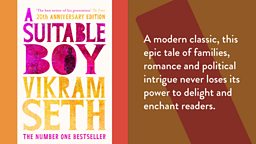
Set during the Indian election period in the early 1950s, A Suitable Boy follows the Mehra family as Mrs. Rupa Mehra tries to arrange the marriage of her daughter Lata. While she chooses between potential husbands, we follow the members of four families through business, politics and love.
Book Club Questions
1. A Suitable Boy is set soon after the partition of India, and preceding India’s first national election. What role does politics play in setting the scene for the novel?
2. Poetry runs through the novel, from the descriptions of each part to the couplets of the Chatterji family. What does this add to the novel?
3. A Suitable Boy is one of the longest novels ever written in English. Did the length impact how you read it? Why do you think Vikram Seth chose to make his novel so long?
-
![]()
DOWNLOAD: Vikram Seth discusses A Suitable Boy
Vikram Seth discusses A Suitable Boy with Harriett Gilbert and an audience of World Book Club listeners. From May 2005.
-
![]()
READ: A Suitable Boy is one of 10 larger novels that we should all get around to reading
Radio 4 selects some of literature鈥檚 greatest gargantuan novels that we should all add to our reading list, including A Suitable Boy at 1,504 pages.
If A Suitable Boy has a model it is less the 19th-century masterpieces with which it has been compared than the country of India itself - a country whose variety of life and livings provides the writer with a pattern and a challenge.John Lanchester, London Review of Books, 1993
Get Involved

Ballet Shoes by Noel Streatfeild, 1936
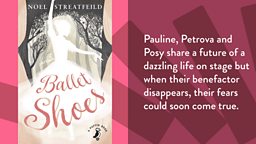
Three unrelated orphans, Pauline, Petrova and Posy Fossil, are adopted by an eccentric explorer known as Gum, who sends them to London to be raised as sisters by his niece Sylvia and her childhood nanny. Gum disappears on a long expedition, promising to be back in five years. Money dwindles and Sylvia takes in paying boarders including a dance teacher. This allows the girls to embark on a career on the stage and support the family.
Book Club Questions
1. What set of morals did Streatfeild want to highlight in her description of the girls?
2. How would Winifred be judged today in a world of social media and selfies?
3. What does Ballet Shoes say about ‘family’?
-
![]()
LISTEN: How accurate is Ballet Shoes as a role model for aspiring young girls?
In 2011, seventy five years after the publication of the children's classic Ballet Shoes, author Adele Geras and Jane Haworth of the English National Ballet discussed its portrayal of the dedication required for classical dance success to ask if it was still relevant for would-be ballerinas.
-
![]()
LISTEN: Noel Streatfeild on Desert Island Discs
In 1976 Roy Plomley met Noel Streatfeild, whose chosen book was The Forsythe Saga by John Galsworthy.
Get Involved

Cloudstreet by Tim Winton, 1991
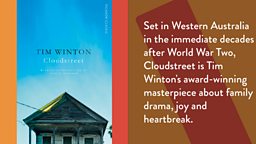
At the end of World War Two, two working class families – the Pickleses and their tenants, the Lambs – move into the big, dilapidated house on Cloudstreet in Perth, Western Australia. Each family carries its share of tragedy, secrets, poverty and loss but, over the twenty years that follow, they come to inhabit the house with its ‘shifty shadows’, and each other’s lives, in ways they never imagined possible.
Book Club Questions
1. The notions of luck and fate are important to the development of the story. How much can events be attributed to them, and how much are they the consequence of the characters’ actions?
2. The novel is peppered with an element of the uncanny and supernatural. What role does this have alongside the mundanity of the characters’ lives, and how is the notion of what is ‘real’ explored and contested?
3. Mothers are central to the story and play key roles in both families. How are different versions of motherhood presented, and would you describe Oriel and Dolly as ‘good’ mothers?
-
![]()
LISTEN: Tim Winton answers questions on his comic epic
Australian National Living Treasure Tim Winton discusses his novel Cloudstreet with a World Book Club audience.
-
![]()
LISTEN: The ties that bind in Cloudstreet
Martha Kearney, Colm T贸ib铆n and Tony Robinson explore the family dynamics and relationships of Cloudstreet. From 2006.
I found it very moving and interesting. The ties that bind, the way people love each other, how that love makes its way into language.Colm T贸ib铆n
Get Involved

Cold Comfort Farm by Stella Gibbons, 1932
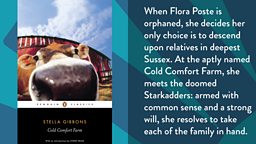
Recently orphaned, Flora Poste decides she must avail herself of the hospitality of distant relatives, the intriguing Starkadders of Cold Comfort Farm. Once settled in, Flora sets about trying to improve the lives of each of them in turn, with comic consequences. Featuring a wonderful cast of characters, Stella Gibbons parodies the romantic, pastoral stories that were popular during the 1930s.
Book Club Questions
1. How well do you think that the novel works as a parody and what techniques does the author use to achieve this?
2. The book has a host of imaginatively named characters – who were you to drawn to and why?
3. There are several unresolved plotlines at the end of the novel. Why do you think the author did this and does it impact your enjoyment of the book overall?
-
![]()
LISTEN: Kenneth Williams brings the Cold Comfort Farm country folk to life
Kenneth Williams demonstrates his glorious vocal talents in this classic recording from the wickedly funny novel, first broadcast on 大象传媒 Radio 4 in 1974.
-
![]()
LISTEN: Cold Comfort Farm - What makes a book funny?
Dr Sarah Dillon asks what are the ingredients that make a funny book, with a close reading of Gibbons' parody including a central role for snoods, porridge and throbbing passions.
I especially like Big Business the bull, Mr Mybug who fancies Flora, and I delight in the idea of The Quivering Brethren who meet weekly in the village to Quiver with religious fervour.Author Lesley Pearse, The Independent, 2015
Get Involved

I Capture the Castle by Dodie Smith, 1948
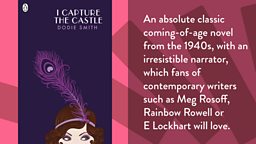
In I Capture the Castle we meet the eccentric Mortmain family, who reside in a ramshackle castle in the middle of the English countryside. Living in genteel squalor and struggling to put food on the table, the family’s world is turned upside down by the arrival of two eligible brothers from America.
Book Club Questions
1. Smith lived in the USA throughout the 1940s and I Capture the Castle is seen as a response to her homesickness for England. How does the author depict England and Englishness in the novel?
2. The story is told through the diary entries of 17-year-old Cassandra Mortmain. Why do you think the author chose a diary format for the novel? What are the benefits and limitations of this style?
3. What do you think the novel says about wealth and class in this post-war era?
-
![]()
LISTEN: The opening of I Capture the Castle
A clip from the Radio 4 dramatisation in which Holliday Grainger (Cassandra) reads the opening lines from the classic novel.
-
![]()
LISTEN: The cult following for a classic novel
Smith's biographer Valerie Grove, and Heidi Thomas, who adapted I Capture The Castle for the big screen, discuss her legacy with Mariella Frostrup.
Get Involved

Middlemarch by George Eliot, 1871

Middlemarch tells the story, set between 1829 and 1832, of a fictional English village during a time of political and ideological change. It follows the lives, loves, and losses of a host of characters across the village. From landowners to doctors, farmhands to religious leaders, Middlemarch is an in-depth, all-encompassing snapshot of rural life, tracking changes in ideologies, religious thought, artistic outlooks, and more.
Book Club Questions
1. Middlemarch often feels very contemporary in the way it tracks family drama and relationship turmoil. How relevant do you feel the novel is to how we live today?
2. Do you feel there is a central or main protagonist to Middlemarch, or is each character given equal weight as the novel spans the life of the community?
3. Are there any defining events in the novel, or specific critical moments in the narrative that turn the course of events? If so, do they feel realistic?
-
![]()
WATCH: Contemporary artist Gillian Wearing celebrates the legacy of George Eliot
A full-length Arena called Everything is Connected that sees Wearing's experimental film made up of a diverse cast celebrating the legacy of Victorian novelist George Eliot.
-
![]()
大象传媒 SOUNDS BOX SET: George Eliot's Middlemarch unabridged
Listen to Middlemarch, a jewel in the classic novel crown with a truly wonderful, epic narrative arc.
Get Involved

Tales of the City by Armistead Maupin, 1978-2014
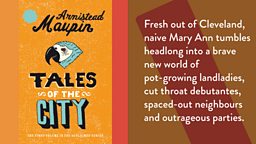
Tales of the City is an episodic exploration of 1970s San Francisco, delighting the reader with its slices of life, vignettes from the city's most decadent days. Maupin paints a fascinating picture of its hedonism, aesthetics, insecurities, and its own particular imagining of the American Dream, all through the heartfelt and very real interactions of its central characters. Never judgemental, this interwoven character piece is at once funny, poignant and lovingly depicted.
Book Club Questions
1. Discuss the significance of ‘the city’ from the title. Why is it ‘the’ city, and not ‘a’ city?
2. How does the book compare with other stories about American migration and the search for a better life?
3. The book was originally serialised in the San Francisco Chronicle, set in the time it was written. How would this change your experience of the story as a reader?
-
![]()
LISTEN: Armistead Maupin's Tales of the City - "Everything that happened to me... got used in the story"
This and 14 further clips explore the world of Tales of the City, as Armistead Maupin talks about breaking new ground with his San Francisco stories.
-
![]()
LISTEN: "When you read them it feels like you've come home"
Damian Barr champions Armistead Maupin's Tales of the City novels for Front Row's Queer Icons series.
Get Involved

The Shipping News by E. Annie Proulx, 1993

Quoyle is an introverted and hapless man in New York, searching for connections and purpose. After the traumatic death of his wife he begins an aimless journey to Newfoundland. In his new position of a shipping news reporter he finds himself part of the unfolding drama. In Newfoundland, he is surrounded by a rich cast of locals and family members who play a part in Quoyle's struggle to reclaim his life.
Book Club Questions
1. Each chapter begins with a quotation from The Ashley Book of Knots as well as a drawing of the knot described. Why do you think Proulx did this?
2. What are the significant changes that occur when Quoyle and his family move to Newfoundland? How do he and his family affect the lives of those living there?
3. As Quoyle arrives in Newfoundland, he hears much of his family's past and discovers one member is still alive. Why does Quoyle avoid Nolan?
-
![]()
LISTEN: Annie Proulx - the possibilities of love, and the haunting location of The Shipping News
Bookclub at the 2001 Brighton Festival, as Jim Naughtie is joined by Annie Proulx and an audience of book lovers.
-
![]()
LISTEN: Harriett Gilbert speaks to Annie Proux at home in Wyoming
Annie Proulx reads from The Shipping News and talks about her short story Brokeback Mountain.
Get Involved

The Tenant of Wildfell Hall by Anne Bront毛, 1848

The aloof young widow Mrs Graham moves to a remote house with her son and stirs up gossip in the local area, becoming a social outcast. She is befriended by Gilbert Markham, a neighbouring farmer, who falls in love with her but becomes mistrustful of her. After he gets into a fight with her landlord, she gives him her diary to read and the shocking story of her marriage is revealed.
Book Club Questions
1. How shocking do you think the details of Helen’s marriage would have been in the 1840s? Are they any less shocking today?
2. How does the form of the novel as a mixture of letters and diary entries influence your reading?
3. The Tenant of Wildfell Hall is sometimes described as one of the first feminist novels. Which themes in the book reflect this?
-
![]()
LISTEN: How shocking and controversial was Anne Bront毛's novel?
Regarded as one of the most shocking of the Bront毛鈥檚 novels, Jane Garvey discusses the controversy with historian Dr Pam Hirsch and literary critic Dr Patsy Stoneman.
-
![]()
WATCH: To Walk Invisible
Clips from the 2016 drama which explored the life of the Bront毛 sisters' and their extraordinary battle for recognition.
Get Involved

The Witches by Roald Dahl, 1983
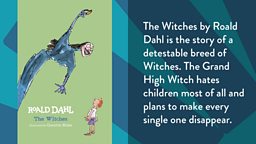
After losing his parents in a car accident, a seven-year old boy goes to live with his Norwegian grandmother, a retired witch hunter who teaches him everything she knows about witches. When the Grand High Witch gathers all the witches of England in the hotel where boy and grandmother are guests, will they be up to the challenge?
Book Club Questions
1. How do the characters of the grandmother and of the Grand High Witch differ from one another? Do you think their opposition can be seen as a metaphor?
2. What dynamics of the relationship between the boy and his grandmother does their adventure highlight?
3. How are Dahl's witches different from and similar to the witches of traditional fairy tales?
-
![]()
READ: Roald and Sofie - 40 years of remarkable letters that tell a story about Dahl
Biographer Donald Sturrock explains how Dahl might have become an oil executive, if it hadn鈥檛 been for myths of his mother鈥檚 Norwegian homeland.
-
![]()
WATCH: The Marvelous World of Roald Dahl
The 2016 documentary, largely told in his own words and the words of his collaborators, reveal the often stranger than fiction life of Roald Dahl. Watch clips.
Get Involved

Book club questions on Family and Friendship
To round off our 10 novels in the Family & Friendship theme, here are five stimulating questions to ponder. And below, to continue exploring, try our further reading suggestions.
1. Why do you think novels dealing with families and friendships are always popular with readers?
2. Novels about families and friendships focus on both the support they provide, but also the conflicts that can arise. How do authors balance the two?
3. Many novels bring together a cast of characters, whether different family members, or friends from different backgrounds, each with their own, individual story. How do these differ from a novel about one central character?
4. What would a novel about your family or friends be like? Are there any particular aspects or moments of your life that you would focus on?
More novels exploring Family and Friendship
A Spool of Blue Thread by Anne Tyler
Little Women by Louisa May Alcott
Fun Home by Alison Bechdel
The Corrections by Jonathan Franzen
An American Marriage by Tayari Jones

The Novels Survey
-
![]()
Contribute to a people's list of best-loved family & friendship stories and get personalised book recommendations.

- Produced with support from
- Most of the books on the Novels 100 list are available in various formats from the .

- Novels That Shaped Our World is run in partnership with and is supported by .
Get Involved
-
![]()
Share the book you love on Twitter
-
![]()
Tell us about the novels you love on Facebook
-
![]()
Show us a book (or books) you love using the hashtag #mybooklife
Brilliant books content on 大象传媒 iPlayer
-
![]()
Novels That Shaped Our World
Looking at class in all its shapes and sizes, from all sides of the class divide, in the UK, USA and India
-
![]()
Everything Is Connected - George Eliot's Life
Gillian Wearing's experimental film, made up of a diverse cast of people, celebrate the legacy of the Victorian author
-
![]()
Face to Face: Maya Angelou
In this classic interview from 1994, Jeremy Isaacs talks to Maya Angelou about her life, her writing and her hopes for the future
